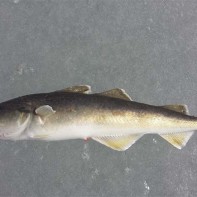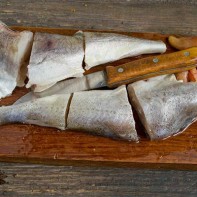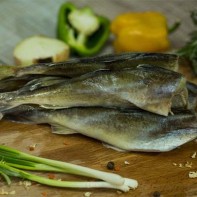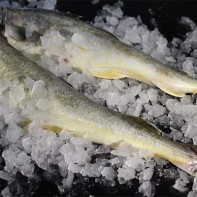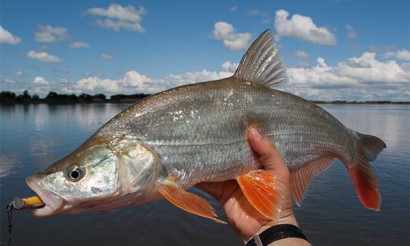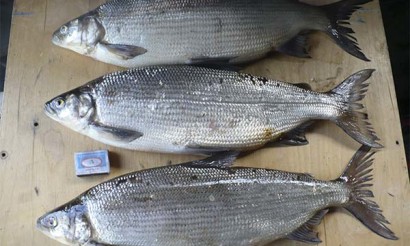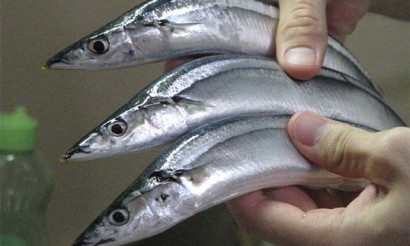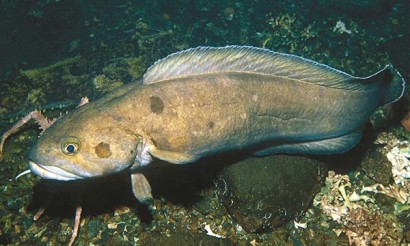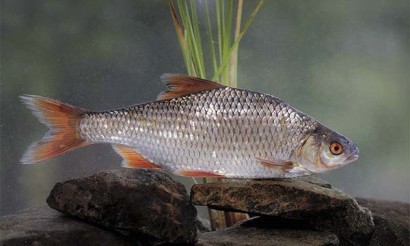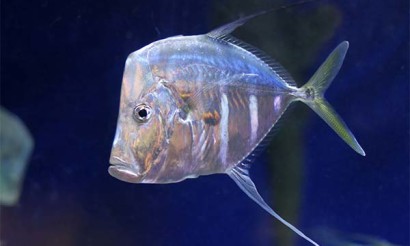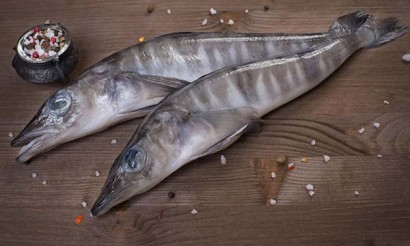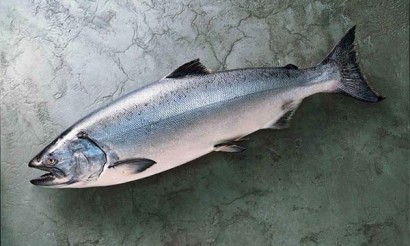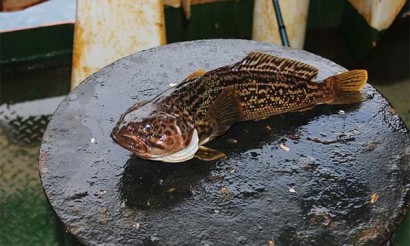Saffron cod: description, useful properties, recipes for cooking
Saffron cod has been known to northern peoples since ancient times. And in the 16th century it began to be delivered in fish carts to the central regions of Russia. Inexpensive, compared to other types of cod, it quickly gained popularity. The name of the fish has a Finnish origin.
- Saffron cod: what kind of fish, how it looks and where it is found
- Types
- Habitats
- Lifestyle
- What does it eat?
- What it tastes like
- Composition and calories
- How is navaga fish useful?
- General benefits
- For Women
- For Men
- In Pregnancy
- For breastfeeding
- For children
- For elderly people
- Can I Eat Saffron Soup while Losing Weight
- Caviar use
- How to cook caviar
- How to salt it
- Saffron cod damage and contraindications
- How to choose and store properly
- How to cook saffron cod: Recipes
- In the pan
- In the oven
- In a multicooker
- Peculiarities of catching fish
- Where to find
- Used tackles
- Fishing tactics
- Bait
- Q&A
- Which fish is better: pollock or saffron cod?
- Do they clean navaga?
- Bony or not?
- What products can be combined with?
- Interesting facts
Saffron cod: what kind of fish, how it looks and where it is found
Despite its outward resemblance to cod, saffron cod differs from it in its small head and protruding upper jaw. The body is more rounded than that of other members of this family, strongly tapering to the tail. The spotted greenish-gray back has three fins. The sides, silvery-purple on top, gradually become lighter, passing into a whitish belly.
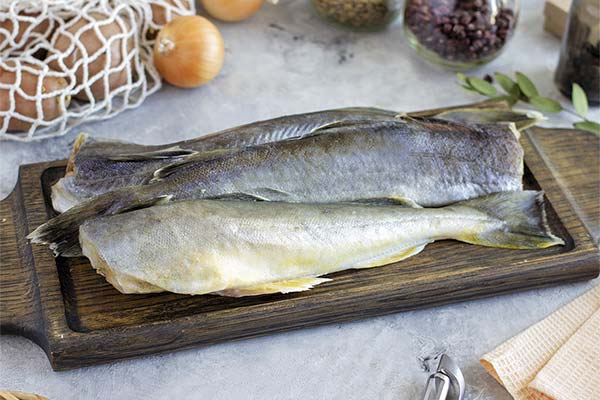
On average, an adult fish reaches 30-50 centimeters and weighs 400-500 grams.
Species
The northern saffron cod, which lives in the White, Kara and Barents Seas, was first widely known. It is smaller and has a tender and soft meat. For many years it was caught on an industrial scale.
Far Eastern or Pacific saffron cod, sometimes called whitefish, is found in the Sea of Japan, Sea of Okhotsk and Bering Sea. This species is larger, but the meat is noticeably tougher than that of the northern variety.
Habitat
Saff prefers to live in cold coastal waters. It is a saltwater fish, although in some cases it can ascend rivers and enter freshwater lakes, where it finds rich prey. Strong tides in its habitat contribute to this.
With the onset of warm weather, saffron cod moves away from the shore and descends to a depth of up to 200 meters. In autumn and winter, this representative of the cod family prefers shallow waters. Therefore it often becomes a prey for ice fishing enthusiasts.
Way of Life
Saffron cod lives in shallow water, because it is a bottom fish. Therefore, it is impossible to meet it in the open ocean. In the fall, flocks of this fish rush to the shore to fatten up the fat and prepare for spawning. It is during this period that they can be found in freshwater reservoirs near the sea. Saffron cod prefer to spawn in places with strong tidal current on sand, gravel or stony ground. Spawning, depending on weather conditions and water temperature, may begin in early December and continue through the winter. During this time, one female hatches several hundred thousand eggs that are attached to the bottom. In April, when the young fish hatch, most of the fry are eaten both by adults of the saffron cod itself and by other predatory fish.
The saffron cod reach sexual maturity in its second or third year of life. This depends on the feeding conditions and the growth rate of the fish. The average life span of an adult is about 9 years.
What does it eat?
The diet of saffron cod depends on its age. For fry the main source of food is plankton. Growing up, they switch to animal food: worms, crustaceans, caviar and other fish. But its diet is not constant. There are four different periods in the annual cycle of the saffron cod. In summer, in search of colder water, it has to move away from the shore and it becomes difficult to get food. In the fall, when it gets colder, it's time for increased feeding. During this period even such large and aggressive fish as the pike suffer from saffron cod. Preparations for starvation during spawning take place. Spring is the most favorable season of fishing for saffron cod. Hungry fish have an extraordinary appetite.
What does it taste like?
You can buy saffron cod in frozen form. Fresh fish can be found only in coastal areas. The northern species is considered more delicious. However, it should be taken into account that two to three months after the catch, the quality of the meat decreases several times. Therefore, experienced cooks recommend buying it in season. Then the taste of the fish will be slightly sweet, tender, without bitterness and without the smell of fish oil.
Far Eastern species can be bought all year round. The meat has a tougher consistency.
Composition and calories
Saffron cod is rightly attributed to diet food due to its low caloric content. In one hundred grams of raw product contains only 69 kcal. If it is fried, the energy value will be 88 kcal, but cooked on steam - 73 kcal. The most caloric is fish cooked under marinade - 136 kcal.
Saffron cod fillet contains a minimum of fat, but is rich in various vitamins, macro- and microelements.
In 100 grams of edible part contains:
Vitamins:
- A, retinol - 15 mcg.
- B1, thiamine - 0.2 mg.
- B2, riboflavin - 0.09 mg.
- B3, nicotinic acid, PP - 3.5 mg.
- B6, pyridoxine - 0.1 mg.
- B9, folic acid - 15 µg.
- C, ascorbic acid - 1 mg.
- E, tocopherol -0.6 mg.
Macronutrients:
- Potassium -400 mg.
- Calcium - 150 mg.
- Magnesium - 35 mg.
- Sodium - 100 mg.
- Sulfur - 151 mg.
- Phosphorus - 220 mg.
- Chlorine - 165 mg.
Micronutrients:
- Iron - 063 mg.
- Iodine - 150 mg.
- Cobalt - 20 mg.
- Manganese - 0.1 mg.
- Copper - 130 micrograms.
- Molybdenum - 4 ug.
- Nickel - 7 ug.
- Fluorine - 700 ug.
- Chromium - 55 ug.
- Zinc - 0.9 mg
Saturated fatty acids - 0.5 g.
Important: The glycemic index of navaga fish is 0 units.
How is navaga fish useful?
Due to its useful properties, saffron cod is sometimes called black cod. Its benefits, high taste and reasonable price makes the fish indispensable in the menu of people of all ages.
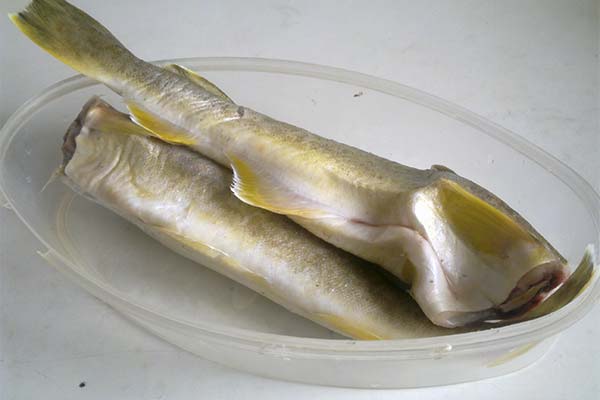
General benefits
Despite the fact that the polyunsaturated fatty acids omega-3 in navaga does not contain much, but together with vitamins, micro-and macro-elements, which are in this fish, dishes of it help:
- Prevent the development of atherosclerosis.
- Normalize the work of the cardiovascular system.
- Improves memory.
- Activates the metabolic processes.
- Improves the immune system.
- Stimulates the work of the endocrine system.
- Prevents early aging of the body.
- Lowers the level of "bad" cholesterol in the blood, prevents the formation of cholesterol plaques.
For women
- For women who are engaged in intellectual work and lead a sedentary lifestyle, the protein that is rich in saffron milkfish helps to keep muscles toned, not allowing them to atrophy.
- During the menstrual cycle, at menopause, a complex of vitamins and micro- and macroelements contained in the fish, allows you to balance the psycho-emotional state.
- With frequent stress, the inclusion of saffron cod in the weekly menu will help normalize sleep and relieve tension.
- The unique combination of nutrients in this fish contributes to the normal functioning of the body, maintains skin elasticity, gives the opportunity to look healthy hair and nails.
For men
- For men, the main benefit of saffron cod is its antioxidant properties. That they help prevent pathological changes in the prostate gland.
- Selenium, which is contained in fish, helps to produce sperm cells, activating the genital glands, strengthens the immune and nervous systems.
- Protein is involved in the synthesis of free testosterone, which affects libido.
- With high mental stress weekly use saffron cod helps to improve memory, activate the brain, strengthen the nervous system.
When pregnant
- The content of DHA (docosahexaenoic acid) in the meat fibers makes this cod family fish essential for women who are pregnant. This substance is indispensable for the formation of the fetus's brain, central nervous and cardiovascular systems. It is also beneficial for the vision of the unborn child.
- The daily consumption of 200 grams of saffron cod will help protect the fetus at the cellular level from the negative effects of the external environment, prevent the threat of miscarriage, and reduce toxicity.
- Iodine and iron will help to avoid anemia, which often develops in women during pregnancy and in the postpartum period.
When breastfeeding.
Pediatricians do not recommend eating navaga for women who are breastfeeding a newborn baby until the baby is one month old. This product can cause the fontanelle to overgrow too quickly. Also, allergic reactions may occur in the baby.
After this period saffron cod can be introduced into the diet of a nursing mother, starting with small pieces steamed or boiled. At first, it is better to eat fish before dinner and watch the reaction of the baby. On this day you can not enter into your diet of other new products. If the baby did not have adverse effects, then gradually the portion can be increased.
Useful substances contained in saffron milk, will provide the mother's body with useful vitamins and trace elements, keep the nervous system in order, will help to adapt more smoothly to a new regime of life.
Together with milk, the child will receive the necessary substances for the formation of bone and cartilage.
For children
Saffron cod is a valuable product for the growing body. But if a woman during pregnancy and breastfeeding did not eat saffron cod, it is better not to take the risk and try to give the baby fish for the first time only after two years.
If the baby is not allergic to this product, then you can enter it in the complementary food from ten months. Since there are almost no small bones in saffron cod, it does not take much effort to separate and grind the fillets.
It is best to use freshly caught fish, but frozen will do.
Children enjoy eating dishes made of navaga, they like its delicate sweet taste.
Folic acid and nicotinamide activate the brain. Selenium will strengthen the nervous system. This will help to adapt more easily to a new environment when entering kindergarten or school, to better absorb the learning material.
The unique chemical composition of navaga helps strengthen the immune system, helps the production of hemoglobin, prevents the development of myopia, and strengthens the child's bone skeleton.
For the elderly
With age, a person increasingly begins to torment a variety of ailments. Therefore, it is important to pay attention to a properly selected menu. Including saffron cod in your diet can avoid the development of arthritis and arthrosis, and prevent the formation of malignant tumors.
It is enough to eat this fish 2-3 times a week to prevent abnormal brain activity, including the development of senile dementia.
Doctors also recommend saffron milkfish for fragile bones, problems with the cardiovascular system. The antioxidant properties of this product are also of great importance for older people.
Can saffron milkfish be eaten while losing weight?
Wanting to lose excess weight, saffron cod should be steamed or boiled. In this case, the composition of fats in the dish will be minimal, and the useful properties of the product will be preserved. In combination with vegetables, fish will give a feeling of fullness, while the body does not get extra calories.
If the diet is accompanied by intense physical activity, saffron cod can be included in the menu up to five times a week. It will give the necessary energy and keep the muscles toned.
When choosing between the northern and far-eastern species, you should opt for the latter. Vahnya is less caloric.
The benefits of navaga caviar
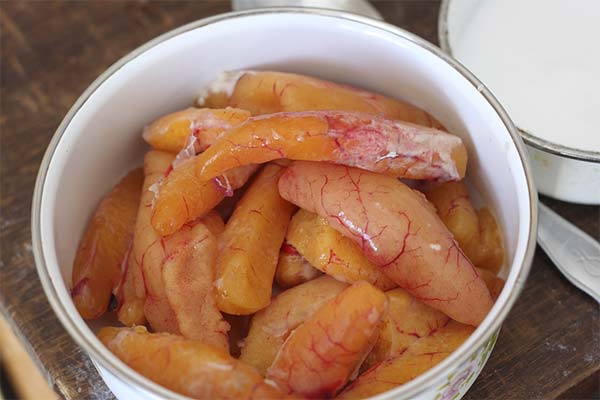
Nature has placed in fish caviar useful substances in high concentration. This is necessary for the development of healthy offspring. Caviar of saffron cod is no exception. It helps to:
- Reduce low-density cholesterol levels in the blood.
- Strengthen the immune system.
- Support the body at high mental and physical stress.
There are several ways to prepare caviar: it is salted, fried, pickled and baked. Before cooking, thaw the fish at room temperature without using the microwave or hot water. It is easiest to cut the fish when it is not completely thawed. The roe is put in a separate bowl.
How to fry caviar
Ingredients: 150 grams of navaga caviar, 1 medium head of onion, 1 medium carrot, 1 clove of garlic, 3 tablespoons of sour cream, salt, spices, vegetable oil.
Method of preparation: Crust the okra with steep boiling water and carefully remove the foil. Wash onion and carrot, peel, finely chop and parboil in hot oil until golden brown. The vegetables are transferred to another container, and in the same oil for 5 minutes roasted caviar, stirring occasionally. Meanwhile, mix sour cream with finely minced garlic, salt to taste and spices. In a pan with caviar put the bayed onions and carrots, pour all the sour cream, cover and stew over low heat for another 5-7 minutes. Serve with a side dish of boiled potatoes.
How to pickle
Ingredients: 200 grams of navaga caviar, 2 teaspoons of fine salt, a glass of water.
Preparation method: Dissolve 1 teaspoon of salt in warm water and wash the roe in it. Free the roe from the film. To do this, you can beat it through a coarse mesh or twist with a fork. Cleaned caviar put in a clean bowl and mix it thoroughly with 1 teaspoon of salt until foamy. After half an hour, flip it on gauze and let it drain for 3-4 hours. After that, transfer it to a glass jar and put it in the refrigerator. Before serving, add vegetable oil.
Useful to know! The cost of frozen saffron cod is from 100 to 200 rubles. Caviar will cost ~500 rubles per kg.
Harm and contraindications of saffron cod
This fish of the cod family has almost no contraindications. Only people with individual intolerance to this product should not eat dishes made of navaga.
Fish caught in polluted waters, improperly stored, subjected to repeated defrosting can cause harm to health.
How to choose and store it correctly
The most useful is navaga caught in the winter months, when the fish is still spawning. After that the amount of useful vitamins, micro-and macronutrients in it sharply decreases, because a lot of them go to the caviar. A rounded belly most likely indicates that spawning has not yet occurred.
When choosing, you should pay attention to the size of the fish. More tender meat has individuals with a length of 20-25 centimeters. Larger specimens are likely to be stiff.
Do not buy it from street vendors and at the market. Stores receive certified goods, which is at least a guarantee of quality.
You can fully assess the quality of purchased fish only at home after defrosting. In the store, you need to pay attention to the amount of ice. Its large amount indicates violations of the rules of storage and transportation of saffron cod. The frozen carcasses will tell the same thing.
If the fish is sold with the head, the eyes should be bright, the gills should be pinkish-red in color and the abdomen should be white. A yellow tint indicates that the once healthy fats have already begun to oxidize. The taste of such a product becomes bitter. It is not recommended to eat it.
Most often you can find headless carcasses on sale. Then you should pay attention to the color of the meat on the cut. It should be light. A grayish shade signals the presence of stale saffron cod.
Fish should be defrosted at room temperature, avoiding shocking methods such as using hot water or the microwave.
Store navaga in the freezer at -18 ° C for no more than 9 months from the date of packaging.
How to cook saffron cod: recipes
Saffron cod can be prepared in different ways. Most often it is fried, but you can also bake, boil, from the heads to boil dietary soup, make cutlets, which children love very much. They add this delicious fish to pies, using the fillet as a filling, include it in salads.

Time for cooking it requires little.
In the frying pan
A simple recipe for fried navaga
Ingredients: 500 grams of fish, 100 grams of flour, 2 chicken eggs, salt, vegetable oil.
Method of cooking: Clean, wash, dry and cut into pieces navaga. In a wide bowl mix flour and salt. In a separate bowl beat eggs with a fork or a whisk. Pieces of fish are dipped in egg, then dipped in flour, and placed in a frying pan with vegetable oil. Fry on each side for about five minutes until golden brown.
Fried navaga with vegetables
Ingredients: 2 medium fish, 2 heads of onions, 1 medium carrot, 2 tomatoes, 300 grams of Parmesan, salt, ground black pepper, vegetable oil, herbs.
Method of preparation: Peel the navaga, rinse and dry with a paper towel. Then cut it into portions and salt and pepper it. Fry the fish on both sides until golden brown and leave to rest for a while in a closed container. Meanwhile prepare the vegetables. Scald the tomatoes with boiling water, remove the skin and cut into cubes. Onion cut in half rings, finely chop carrots. Fry the onion and carrot for 5 minutes, add the tomatoes, close the pan with a lid and stew for another 7-10 minutes. Then add the fish and leave on a low heat for 5 more minutes. The finished dish is sprinkled with parmesan and herbs.
In the oven
Saffron cod baked in foil
Ingredients: 2 fish carcasses, 0.5 lemon, salt, ground pepper, rosemary.
Method of preparation: Clean fish, rinse under running water. On a fish-case make 4-5 cuts going at an angle from a backbone to a belly and put slices of lemon into them. Salt and pepper the navaga and sprinkle with rosemary. On a sheet of foil put a piece of parchment greased with vegetable oil so that the juice from the lemon does not touch the aluminum, and wrap the fish carcass in them. Preheat oven to 180°C and put the tray with the product for 25 minutes. Serve the navaga directly in foil.
In the multicooker
Braised with vegetables and sour cream navaga
Ingredients: 2 fish carcasses, 100 grams each of onions, carrots, sour cream, 100 ml of water, salt, ground pepper, vegetable oil.
Method of preparation: Cleaned, washed and cut into pieces, place the fish in the bowl of the multicooker, pre-grease it with vegetable oil. Add salt and pepper to taste. Grate carrots on a coarse grater, cut the onion in half rings. Add the vegetables to the fish and brush the top with sour cream. Gently pour water along the wall of the bowl. In the multicooker select the mode "stew" and set the timer for 40 minutes.
Peculiarities of catching fish
Amateur fishing of saffron cod occurs mainly in the winter. It is at this time that the fish is most delicious.
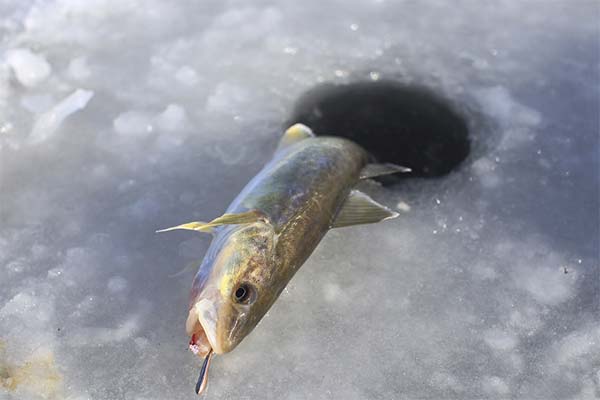
Where to find
Despite the fact that industrial fishing has significantly reduced the number of saffron cod, during the spawning period, flocks of fish rush to their favorite familiar places near the shore and in the mouths of rivers flowing into the sea. This small predator prefers sand and gravel beds, riverbeds with low current, the coastal areas of the sea.
Used tackle
Bait for catching saffron cod is simple enough, because the fish is small and quite voracious. It is enough to have a rod not more than half a meter long, equipped with skipping rings. In addition, use inertial winter fishing reel, line with a diameter of 0.35 mm, fluorocarbon leash length of up to 0.5 m and a diameter of 0.15 mm, bait and jerkbait.
Fishing tactics
For bait, both pieces of the saffron cod itself and other fish, worms, mollusks, pieces of meat are used. From artificial baits well showed itself pielker and vertical oscillating baits.
Bait for catching fish suspended in the near-bottom layer, or drop to the bottom. If a shoal of saffron cod comes, the bite will be immediate.
It should be borne in mind that saffron cod have very soft lips, so do not make sharp jerks.
Bait .
As bait, you can use crushed worms, ground fish heads, crayfish, mussels. Sometimes boiled potatoes are used to make balls.
The prepared pieces are placed in a special feeder or a fine-meshed net and lowered to the very bottom with the help of weights.
Question-answer
Which fish is better: pollock or saffron cod?
Both fish belong to the cod family. Saffron cod meat tastes tender and juicy. Alaska pollack seems to be dry. But its individual intolerance is much rarer. Therefore, it is often included in children's menus.
Is navaga cleaned?
Most often, the fish is sold already gutted. So it is easy to cut the fish. You only need to cut the head and fins and remove the black film from inside the carcass. Scales of this fish are very small and when fried turns into a fried crust. But before boiling or baking navaga, especially saffron cod, it is better to remove the skin. To do this, a longitudinal incision is made along the backbone, hands are dipped in salt so as not to slip and skin is removed, which is very easy to separate from the meat.
Bony or not?
Saffron cod has almost no small bones, which is why it is so valued by cooks. Fillet is easily separated from the backbone, especially after heat treatment. Due to this feature, it is often used in children's menus and for cooking minced fish.
What products can be combined with?
Saffron is most often served as a main dish, with stewed or roasted vegetables and potatoes as a side dish. Fried onions, dill and parsley set off the fish taste well.
Nutritionists consider a good combination of navaga with such foods as cabbage, green vegetables, carrots, greens and milk whey. Acceptable foods include rice, buckwheat, tomatoes, vegetable and butter, zucchini and eggplant. It is undesirable to eat this fish with legumes, wheat bread, any fermented dairy products, mushrooms, meat and poultry
Interesting Facts
- In the old days, catching saffron cod was considered a woman's business. In the Pomor villages there were created whole artels of women navazh women, whose task was to provide the community with this fish.
- People's nicknames were not spared this fish of the cod family. Large specimens in coastal villages are called mamkas, medium-sized frying pans, and small samurai, because they greedily rush after any bait.
- In the fish convoy with which Lomonosov came from Kholmogory to Moscow, there was also frozen saffron cod.
«Important: all information on this site is provided solely for informational purposes only. Before applying any recommendations, please consult with a specialist. specialist. Neither the editors nor the authors are liable for any possible harm caused by materials."

